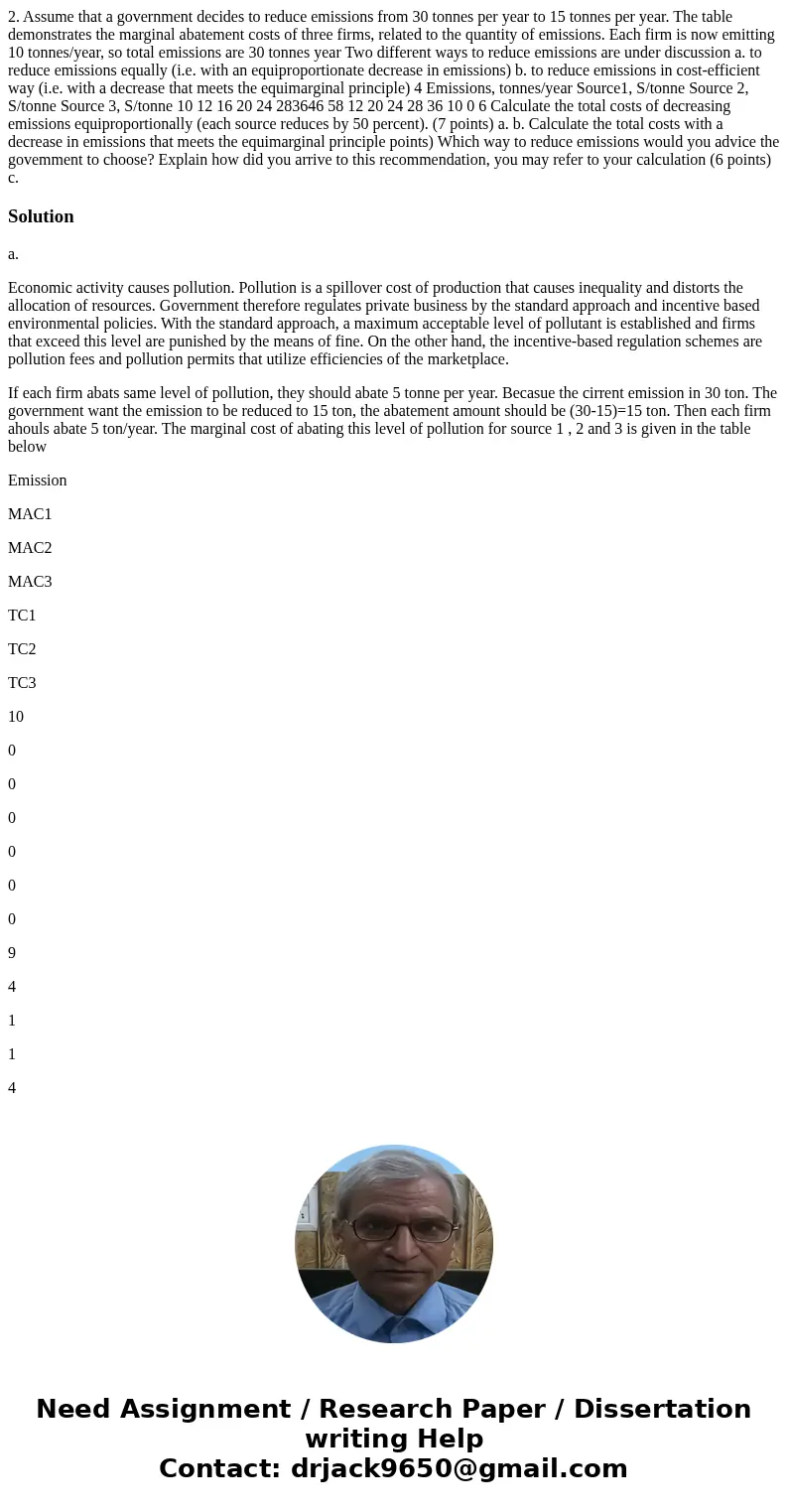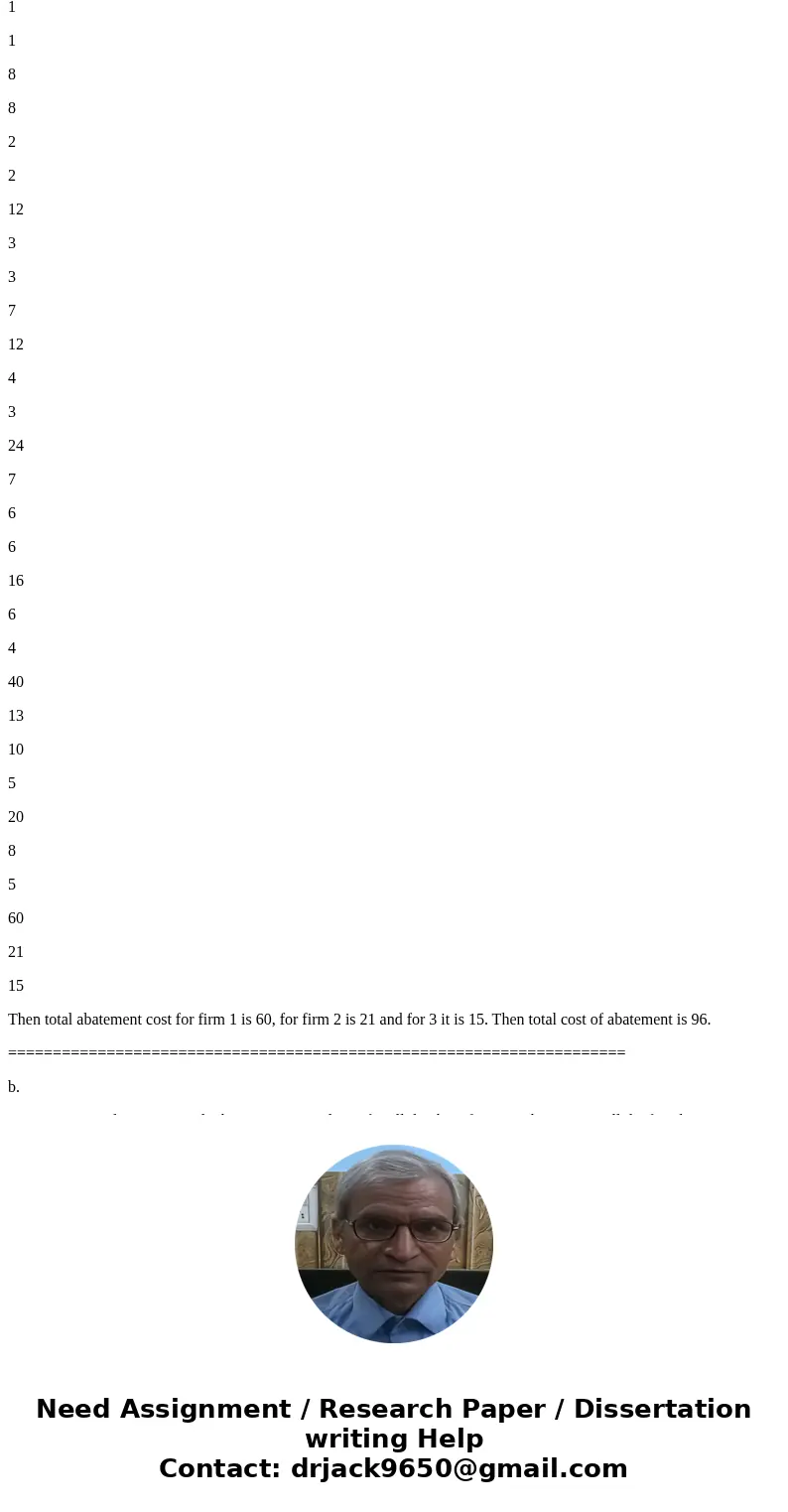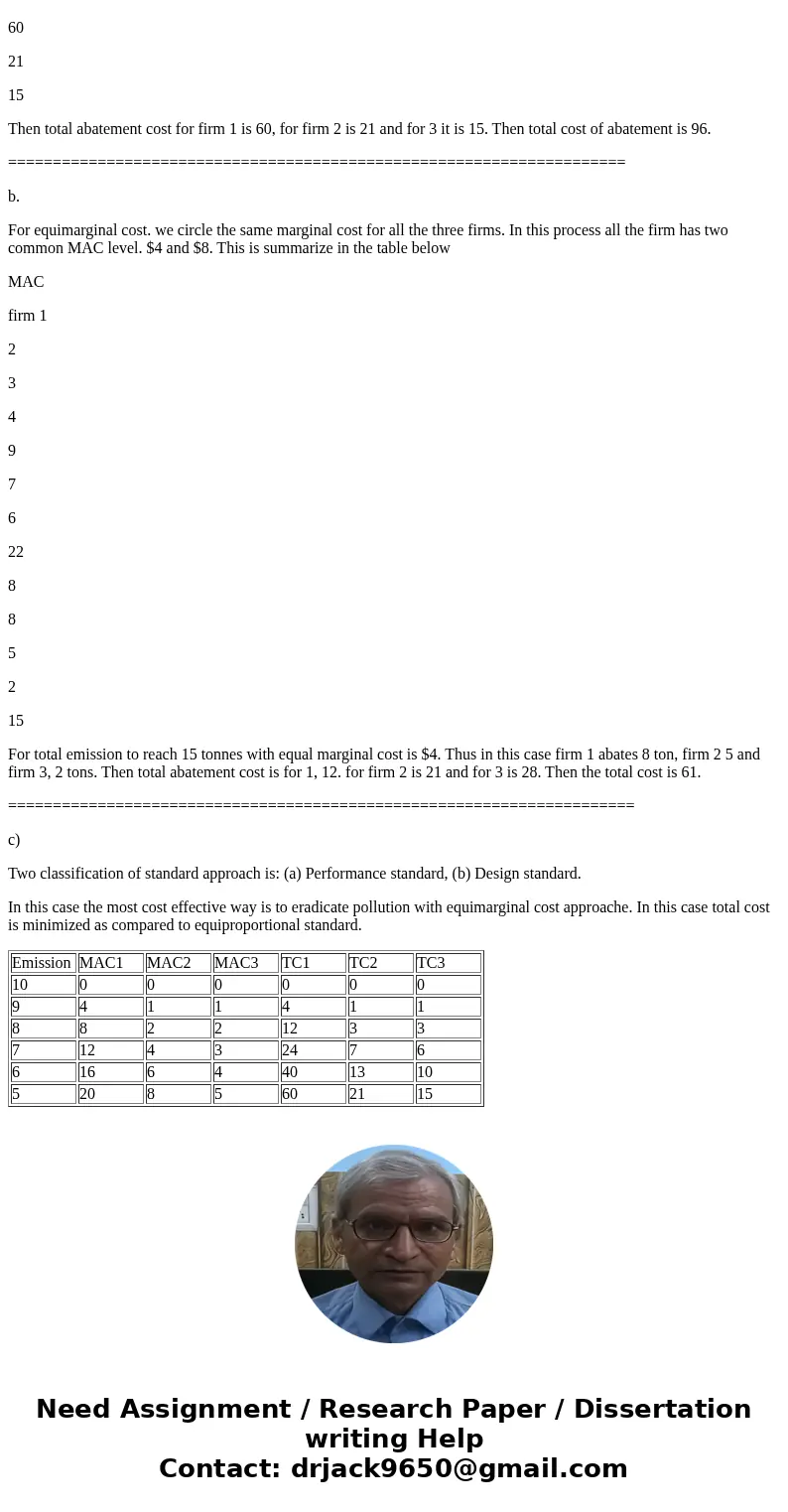2 Assume that a government decides to reduce emissions from
Solution
a.
Economic activity causes pollution. Pollution is a spillover cost of production that causes inequality and distorts the allocation of resources. Government therefore regulates private business by the standard approach and incentive based environmental policies. With the standard approach, a maximum acceptable level of pollutant is established and firms that exceed this level are punished by the means of fine. On the other hand, the incentive-based regulation schemes are pollution fees and pollution permits that utilize efficiencies of the marketplace.
If each firm abats same level of pollution, they should abate 5 tonne per year. Becasue the cirrent emission in 30 ton. The government want the emission to be reduced to 15 ton, the abatement amount should be (30-15)=15 ton. Then each firm ahouls abate 5 ton/year. The marginal cost of abating this level of pollution for source 1 , 2 and 3 is given in the table below
Emission
MAC1
MAC2
MAC3
TC1
TC2
TC3
10
0
0
0
0
0
0
9
4
1
1
4
1
1
8
8
2
2
12
3
3
7
12
4
3
24
7
6
6
16
6
4
40
13
10
5
20
8
5
60
21
15
Then total abatement cost for firm 1 is 60, for firm 2 is 21 and for 3 it is 15. Then total cost of abatement is 96.
=====================================================================
b.
For equimarginal cost. we circle the same marginal cost for all the three firms. In this process all the firm has two common MAC level. $4 and $8. This is summarize in the table below
MAC
firm 1
2
3
4
9
7
6
22
8
8
5
2
15
For total emission to reach 15 tonnes with equal marginal cost is $4. Thus in this case firm 1 abates 8 ton, firm 2 5 and firm 3, 2 tons. Then total abatement cost is for 1, 12. for firm 2 is 21 and for 3 is 28. Then the total cost is 61.
======================================================================
c)
Two classification of standard approach is: (a) Performance standard, (b) Design standard.
In this case the most cost effective way is to eradicate pollution with equimarginal cost approache. In this case total cost is minimized as compared to equiproportional standard.
| Emission | MAC1 | MAC2 | MAC3 | TC1 | TC2 | TC3 |
| 10 | 0 | 0 | 0 | 0 | 0 | 0 |
| 9 | 4 | 1 | 1 | 4 | 1 | 1 |
| 8 | 8 | 2 | 2 | 12 | 3 | 3 |
| 7 | 12 | 4 | 3 | 24 | 7 | 6 |
| 6 | 16 | 6 | 4 | 40 | 13 | 10 |
| 5 | 20 | 8 | 5 | 60 | 21 | 15 |



 Homework Sourse
Homework Sourse